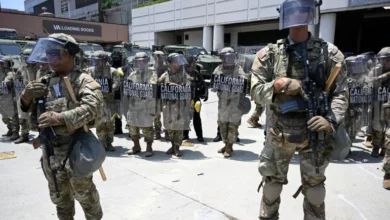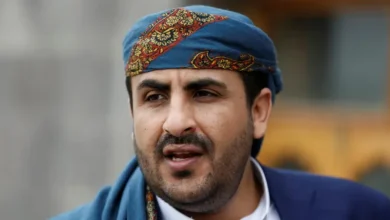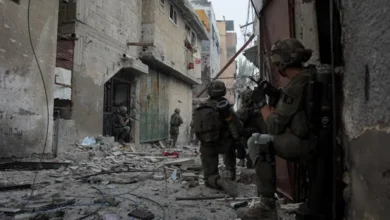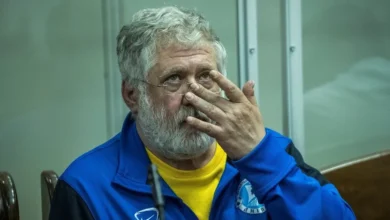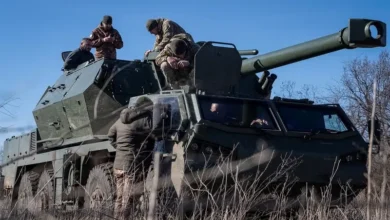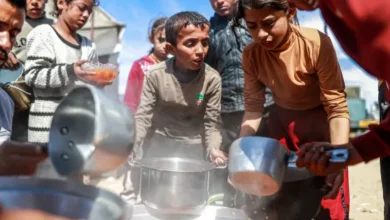Military attack leaves Myanmar’s displaced civilians with ‘no safe place’
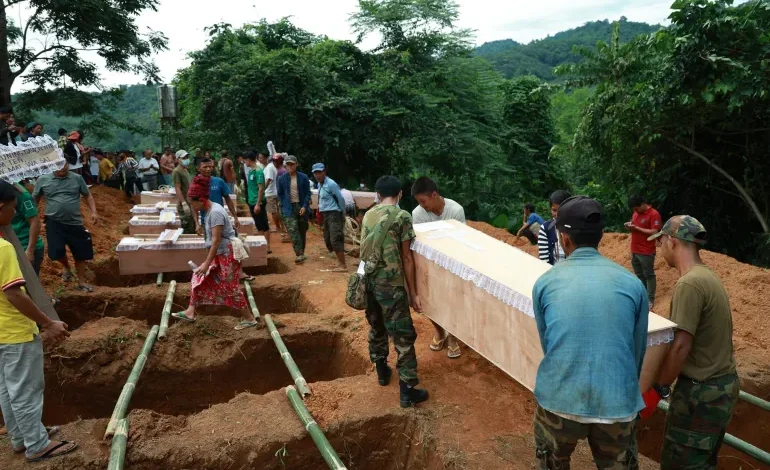
On the night of October 9, Seng Mai was awoken by a deafening explosion that tore apart her shelter in Mung Lai Hkyet, a camp for conflict-displaced people in northern Myanmar’s Kachin State.As rounds of mortar fire thundered from the direction of a nearby military post, she crawled into a makeshift trench.
“A grandmother was crying and shouting for help. My mother was running barefoot,” she said. “Children were also running in the dark, struggling to reach a safe place.”
By the time the bombardment was over, 28 civilians including 12 children had been killed and dozens of shelters as well as a kindergarten and church were destroyed. Rights groups have blamed the military, which seized power from the elected government of Aung San Suu Kyi in February 2021 and has so far denied responsibility for the attack.
It has an extensive record of targeting civilians and civilian areas, however, and its actions have only become “increasingly brazen” since the coup, according to a United Nations-appointed investigative mechanism. In August, the mechanism announced that it had found “compelling evidence” that the military had committed “more frequent and audacious war crimes and crimes against humanity”.
Bolstering this claim, a report published by the UN’s human rights office last month found that the military had killed at least 3,800 civilians, destroyed nearly 75,000 civilian properties and conducted nearly 1,000 air strikes in the more than two and a half years since the coup.
“Emboldened by confidence in impunity, military actions have grown in intensity and brutality,” said the report. “A seemingly endless spiral of military violence has engulfed all aspects of life in Myanmar.”“I want to sleep at night but I can’t because I keep recalling the attack. I feel fearful and anxious about what might happen, while also recalling the terrible and tragic experiences that I’ve been through,” said Seng Mai, who has lived in Mung Lai Hkyet since 2011. “Since I became an IDP [internally displaced person], there have been many long and sleepless nights.”
Al Jazeera has given Seng Mai and others interviewed pseudonyms due to the risk of military retaliation.
‘No safe place’
Like many ethnic minorities in Myanmar, Kachin people were targets of the military’s human rights abuses long before the coup. The Kachin Independence Organisation (KIO), one of more than a dozen ethnic armed groups along the country’s borders, began its struggle for autonomy in 1961 and ever since, the military has attempted to cut its access to food, funds, intelligence and recruits in a strategy known as “four cuts.”
The approach, which specifically targets civilians, has only added fuel to the Kachin resistance, which entered a new phase with the collapse of a 17-year-long ceasefire in 2011. The fighting that followed displaced some 100,000 people, most of whom fled to camps. With the military criminalising affiliation with or support to the KIO under its Unlawful Associations Act, more than a third took refuge in KIO territory along Myanmar’s eastern border with China.
Htu Raw, who is using a pseudonym, recalled hearing the fighting break out from the state capital of Myitkyina, where she was boarding at the time to attend high school. Her family soon fled their village but she only found out two years later when she finished school and her mother came to pick her up.
“I noticed that the journey back wasn’t the same,” Htu Raw said. “I asked her where we were going, and she replied, ‘We have become IDPs now and we’re going back to the camp’.” Known as Woi Chyai, it is next to Mung Lai Hkyet and about 5km (3.1 miles) north of the KIO’s headquarters in Laiza.It was only a few years before fighting broke out again, prompting the camps’ residents to dig trenches where they could hide. “There were many times when we had to dig trenches and run into them when we heard the sound of planes,” said Htu Raw.
In 2019, the Aung San Suu Kyi-led civilian government began discussions with Kachin civil society about the return of displaced people to their villages as part of a broader effort to close IDP camps across the country. The initiative, however, was largely rejected by Kachin IDPs themselves due to the lack of a ceasefire between the KIO and the military, or any security guarantee for those who returned.
Still, many realised that the camps could provide them with little protection.
“Since the war resumed in 2011, the entire Laiza area hasn’t been a safe place for us to stay but we don’t have other safe places to go,” said Ah Hpung, a youth leader in Woi Chyai camp.
Traumatised people
After the coup, Kachin IDPs became even more vulnerable as security conditions deteriorated across the country. Within months, the military had killed hundreds of nonviolent protesters, provoking widespread armed resistance to its rule. The KIO has been active in providing training and weapons to newer resistance groups, while also clashing regularly with military forces.
In recent months, the fighting has increasingly neared Laiza, and although the residents of Mung Lai Hkyet had been on alert, the attack on October 9 came without warning. “Normally, we hear artillery shelling and jets flying, and we run and hide in the trenches for a moment, but in this case, we didn’t hear any planes,” said Seng Mai.
According to Ah Hpung, the attack has instilled a new level of fear among the displaced. “Since the war resumed, bombs have regularly fallen near us, but we felt we could hide in trenches during those times,” he said. “Now, those who were affected during the recent attack don’t dare to go back. We always feel unsafe in our homeland.”
He and others also described a community deeply traumatised by the incident. “Some children lost their mothers. They didn’t speak at all and just stared,” said Ah Hpung. “Some of the children who heard the sound of the bomb and witnessed the scale of the damage are losing their minds.”


